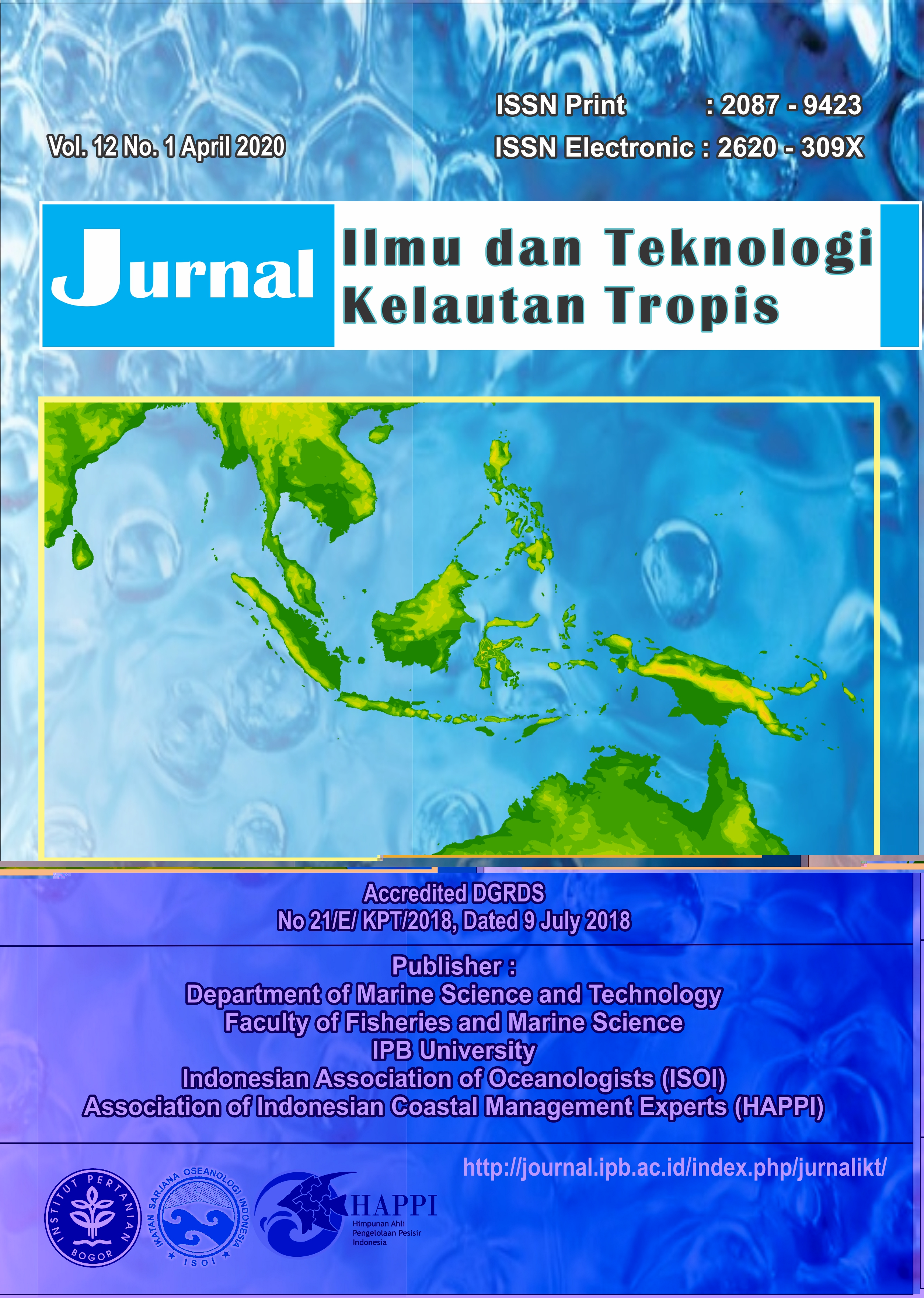POTENCY OF CONSORTIUM SYMBIONT MICROBE OF MANGROVE LITTER AS NATURAL PRESERVATIVE FOR TOFU
Abstract
Symbiont bacteria from mangrove litter are known to have antimicrobial activity against Staphylococcus aureus. However, only a handful of research has been carried out on microbes as an innovative natural material for preserving food, especially tofu. This research used four species of mangrove litter symbiont microbe, which were cultured as a microbial consortium. The study aimed to determine the potential of consortium microbe as tofu preservatives. The tofu was soaked in the liquid culture of the consortium microbe as a treatment, while for the positive control, it was immersed in tofu using 37% formalin, and for the negative control, the tofu was not given any treatment. The organoleptic observations on the second day showed that the tofu with all treatment did not change in odor, color, and texture. On the other hand, tofu without treatment became more acidic in odor, with a yellowish color, and showed a softer texture. On the third day, tofu with bacterial microbe treatment had a slight change in odor, the color became yellowish, and the texture was slightly softened. Tofu with formalin treatment did not change in color, but became more solid and extruded formalin odor. Tofu with the consortium microbe immersion treatment had the least amount (6.795x103) of total microbe count, compared with the formalin treatment (9.766x103) and without treatment (9.766x103).
References
Cholifah, N., L. Hendrarini, & C. Amri. 2017. Pemanfaatan bawang putih dan daun pandan sebagai pengawet alami tahu ditinjau dari masa simpan dan tingkat kesukaan. J. Kesehatan Lingkungan, 9(1): 10-19. http://doi.org/10.29238/sanitasi.v9i1.35
Jun, J., M. Jung, I. Jeong, G. Kim, J. Sim, S. Nam, & B. Kim. 2018. Effects of crab shell extract as a coagulant on the textural and sensorial properties of tofu (soybean curd). Wiley Food Sciences & Nutrition, 7: 547-553. https://doi.org/10.1002/fsn3.837
Matsunaga, N. 2012. Acinetobacter spp. Nihon Rinsho. Japanese J. of Clinical Medicine, 70(2): 236-242.
Pringgenies, D., I. Azmi, A. Ridho, & R. Idris. 2016. Exploration of bacteria symbionts mangrove waste for the production of decomposer. In: International Conference on Coastal Zone” Osaka, Japan May 16-18, 2016. 13 p. http://eprints.undip.ac.id/53256/1/Exploration_of_Bacteria_Symbionts__Mangrove_Waste_for_The_Production_of_Decomposter.pdf
Pelczar, M.J. & E.S.C. Chan. 1986. Dasar-Dasar Mikrobiologi I. Hadioetomo HS, Imas T, Angka SL. Terjemahan dari Element of Microbiology. Jakarta UI Press. 443 p.
Suriani & A. Muis. 2016. Prospek Bacillus subtilis sebagai agen pengendali hayati patogen tular tanah pada tanaman jagung. J. Litbang Pertanian, 35(1): 37-45. http://doi.org/10.21082/jp3.v35n1.2016.p37-45
Authors
The author submitting the manuscript must understand and agree that the copyright of the article manuscript must be submitted/transferred to the Jurnal Ilmu dan Teknologi Kelautan Tropis. This work is licensed under the Creative Commons Attribution-ShareAlike 4.0 (CC BY-SA) International License in which the Author and Reader can copy and redistribute the material in any media or format, and remix, modify and build material for any purpose, but they must provide appropriate credit (citing articles or content), provide a link to the license, and indicate whether there is a change. If you mix, change, or create material, you must distribute your contribution under the same license as the original.


